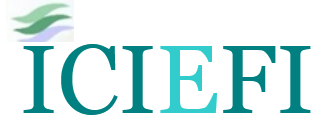Mediating Role of Customer Satisfaction between Service Quality and Customer Loyalty with Non-Interest Bank in Nigeria
Abstract
Keywords
Full Text:
PDFReferences
Albers, S. (2010). PLS and success factor studies in marketing. Handbook of Partial Least Squares.
Bagozzi, & Yi., Y. (1998). On the evaluation of structural equation models. Journal of the Academy of Marketing Science, 16(1), 74–94.
Barclay, D., Higgins, C., & Thompson, R. (1995). The Partial Least Squares (PLS) approach to causal modelling: Personal computer adoption and use as an illustration. Technology Studies, 2(2), 285–309.
Bijttebier, P., Delva, D., Vanoost, S., Bobbaers, H., Lauwers, P., & Vertommen, H. (2000). Reliability and validity of the critical care family needs inventory in a Dutch-speaking Belgian sample. Heart and Lung: Journal of Acute and Critical Care, 29(4), 278–286.
Brady, M. K., Cronin, J. J., & Brand, R. R. (2002). Performance-only measurement of service quality: a replication and extension. Journal of Business Research 55, 17 – 31.
Chin, W. (1998). Commentary: Issues and opinion on structural equation modeling.
Cohen, J. (1988). Statistical power analysis for the behavioral sciences. Statistical Power Analysis for the Behavioral Sciences.
Cronbach, L. J. (1951). Coefficient alpha and the internal structure of tests. 235 Psychometrika, 16(3), 297–334.
Dick, A. S., & Basu, K. (1994). Customer loyalty: toward an integrated conceptual framework. Journal of the academy of marketing science, 22(2), 99-113.
Dijkstra, T. K., & Henseler, J. (2015). Consistent and asymptotically normal PLS estimators for linear structural equations. Computational Statistics and Data Analysis, 81, 10–23.
Duarte, P., & Raposo, M. (2010). A PLS model to study brand preference: An application to the mobile phone market. In V. Esposito Vinzi, W. W. Chin, J. Henseler & H. Wang (Eds.), Handbook of Partial Least Squares (pp. 449-485): Springer Berlin Heidelberg.
Faosiy, A, O., Ahmed, U., Adekunle, B, D., (2016). The significance of Islamic spiritual ethics in human personality development. International Review of Management and Marketing 6(S8), 119-124.
Fornell, C., & Larcker, D. (1981). Evaluating structural equation models with unobservable variables and measurement error. Journal of Marketing
Research, 18(3), 39–50.
Geisser, S. (1974). A predictive approach to the random effect model. Biometrika.
Ghasemi, A., & Zahediasl, S. (2012). Normality tests for statistical analysis: a guide for non-statisticians. International journal of endocrinology and metabolism, 10(2), 486.
Gronroos, C. (1984). A service quality model and its marketing implications, European Journal of Marketing 18 (4), 36 – 44.
Hair Jr, J. F., Sarstedt, M., Hopkins, L., & Kuppelwieser, V. G. (2014). Partial least squares structural equation modeling (PLS-SEM). European business review.
Hair, J. F. J., Hult, G. T. M., Ringle, C., & Sarstedt, M. (2014). A Primer on 248 partial least squares structural equation modeling (PLS-SEM). Long Range Planning (Vol. 46). Thousand Oaks, CA: SAGE Publications, Incorporated.
Hair, J. F., Black, W. C., Babin, B. J., Anderson, R. E., & Tatham, R. L. (2010). Multivariate Data Analysis. Prentice Hall.
Hair, J. F., Money, A. H., Samouel, P., & Page, M. (2007). Research Methods for Business. Education + Training, 49(4), 336–337.
Hair, J. F., Ringle, C. M., & Sarstedt, M. (2011). PLS-SEM: indeed, a silver bullet. The Journal of Marketing Theory and Practice, 19(2), 139–152.
Hair, J. F., Ringle, C. M., & Sarstedt, M. (2013). Partial least squares structural equation modeling: rigorous applications, better results and higher acceptance. Long Range Planning, 46(1–2), 1–12.
Hair, J. F., Sarstedt, M., Ringle, C. M., & Mena, J. A. (2012). An assessment of the use of partial least squares structural equation modeling in marketing research. Journal of the Academy of Marketing Science, 40(3), 414–433.
Hayes, A. A. F. (2013). Introduction to mediation, moderation, and conditional process analysis: A regression-based approach. New York, NY: Guilford. Guilford Press.
Hayes, A. F., & Preacher, K. J. (2010). Quantifying and testing indirect effects in simple mediation models when the constituent paths are nonlinear. Multivariate Behavioral Research, 45(4), 627–660.
Henseler, J. (2017). Using variance-based structural equation modeling for empirical advertising research at the interface of design and behavioral research. Journal of Advertising, in press(January).
Henseler, J. rg J., Ringle, C. M., & Sinkovics, R. R. (2009). The use of partial least squares path modelling in international marketing. Advances in International Marketing, 20(1), 277–319.
Henseler, J., Ringle, C. M., & Sarstedt, M. (2015). A new criterion for assessing discriminant validity in variance-based structural equation modeling. Journal of the Academy of Marketing Science, 43(1), 115–135.
Husna, F. S., Fuaad, M. (2017). A Review of Islamic work ethics and spirituality concepts in service industry Journal of Nusantara Studies, 2(2), 282-294.
Jayasundara, C., Ngulube, P. and Minishi-Majanja, M. K. (2016). A theoretical model to predict customer satisfaction in relation to service quality in selected university libraries in Sri Lanka, South African Journal of Library and Information Science, 75(2), 179 – 194.
Khatoon, S., Zhengliang, X., & Hussain, H. (2020). The mediating effect of customer satisfaction on the relationship between Electronic banking service quality and customer Purchase intention: Evidence from the Qatar banking sector. SAGE Open, 10(2), 2158244020935887
Kock, N., & Lynn, G. (2012). Lateral collinearity and misleading results in variance-based SEM: An illustration and recommendations. Journal of the Association for information Systems, 13(7).
Kotler P (2008), Marketing Management, 13th Edition, Prentice-Hall, Upper Saddle River, NJ.
Kotler, P. & Armstrong, G. (2010). Principles of marketing 13 edn London; Pearson, 816P.
Myo, Y. N., Khalifa, G. S., & Aye, T. T. (2019). The Impact of Service Quality on Customer Loyalty of Myanmar Hospitality Industry: The Mediating Role of Customer Satisfaction. International Journal of Management and Human Science, 3(3), 1-11.
Oliver, R.L. (1999). A behavioural perspective on the consumer, New York; McGraw Hill.
Olorunniwo, F., &Hsu, M. K. (2006). A typology analysis of service quality, customer satisfaction and behavioral intentions in mass services, Managing Service Quality 16 (2), 106 – 123.
Özkan, P., Süer, S., Keser, İ.K. & Kocakoç, İ.D. (2019). The effect of service quality and customer satisfaction on customer loyalty: The mediation of perceived value of services, corporate image, and corporate reputation. International Journal of Bank Marketing, Vol. 38 No. 2, pp. 384-405.
Parasuraman, A., V. A. Zeithaml, V. A., & Berry. L. L. (1994). Alternative scales for measuring service quality: a comparative assessment based on psychometric and diagnostic criteria, Journal of Retailing 70 (3), 201 – 230
Parasuraman, A., Zeithaml, V. A., & Berry, L. L. (1985). A conceptual model of service quality and its implications for future research, Journal of Marketing, 43 (Fall), 41 – 50.
Parasuraman, A., Zeithaml, V. A., & Berry, L. L. (1988). A multiple-item scale for measuring consumer perceptions of service quality, Journal of Retailin, 64(1), 12 – 40.
Parasuraman, A., Zeithaml, V. A., & Berry, L. L. (1991). Refinement and reassessment of the SERVQUAL scale, Journal of Retailing 67(4), 420 – 445.
Rai, A. K., & Srivastava, M. (2014), Customer Loyalty: Concepts, Context and Character, McGraw-Hill Education.
Ramayah, T., Lee, J. W. C., & In, J. B. C. (2011). Network collaboration and performance in the tourism sector. Service Business, 5(4), 411–428.
Reinartz, W., Haenlein, M., & Henseler, J. (2009). An empirical comparison of the efficacy of covariance-based and variance-based SEM. International Journal of research in Marketing, 26(4), 332-344.
Robson, C. (2002). Real world research: a resource for social scientists and practitioner-researchers, 2nd edn Oxford; Blackwell, 624P.
Roldán, J. L., & Sánchez-Franco, M. J. (2012). Variance-based structural equation modeling: Guidelines for using partial least squares in information systems research. In Research methodologies, innovations and philosophies in software systems engineering and information systems (pp. 193-221). IGI Global.
Schiffman, L. G., Kanuk, L. L., & Hansen, H. (2012). Consumer behaviour: A European outlook, 2nd edn Harlow; Pearson Education Ltd, 460P.
Slack, N. J., & Singh, G. (2020). The effect of service quality on customer satisfaction and loyalty and the mediating role of customer satisfaction. The TQM Journal.
Stone, M. (1974). Cross-validatory choice and assessment of statistical predictions. Journal of the Royal Statistical Society. Series B (Methodological), 36(2), 111–147.
Surahman, I. G. N., Yasa, P. N. S., & Wahyuni, N. M. (2020). The Effect of Service Quality on Customer Loyalty Mediated by Customer Satisfaction in Tourism Villages in Badung Regency. Jurnal Ekonomi & Bisnis JAGADITHA, 7(1), 46-52.
Unegbu, V. E., & Onuoha, U. D. (2013). Awareness and use of Islamic banking in Nigeria. Oman Chapter of Arabian Journal of Business and Management Review, 34(981), 1-20.
Yadav, M. K., & Rai, A. K. (2019). An Assessment of the Mediating Effect of Customer Satisfaction on the Relationship Between Service Quality and Customer Loyalty. IUP Journal of Marketing Management, 18(3), 7-23.
Yamane, T. (1967). Statistics: An Introductory Analysis, 2nd Ed., New York: Harper and Row
Yaqub, R. M. S., Halim, F., & Shehzad, A. (2019). Effect of service quality, price fairness, justice with service recovery and relational bonds on customer loyalty: Mediating role of customer satisfaction. Pakistan Journal of Commerce and Social Sciences (PJCSS), 13(1), 62-94.
Zeithaml, V. A., Berry, L. L. and Parasuraman, A. (1996). The behavioural consequences of service quality, Journal of Marketing 60 (April), 31 – 46.
DOI: https://doi.org/10.18196/ijief.v4i1.10424
Refbacks
- There are currently no refbacks.
Copyright (c) 2021 International Journal of Islamic Economics and Finance (IJIEF)

This work is licensed under a Creative Commons Attribution-ShareAlike 4.0 International License.
International Journal of Islamic Economics and Finance (IJIEF)
International Program for Islamic Economics and Finance
Department of Economics
Faculty of Economics and Business
Universitas Muhammadiyah Yogyakarta
Pascasarjana Building, Ground Floor
Jl. Brawijaya (Ringroad Selatan), Kasihan, Bantul
D.I. Yogyakarta 55183, INDONESIA
Official email: ijief@umy.ac.id












1.jpg)